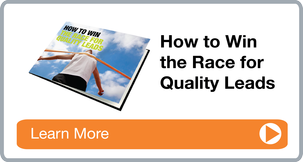Quality over quantity. We’ve heard it a million times. We all know it’s true, but in this dog-eat-dog world where everyone seems to just focus on getting ahead, it’s often forgotten, and even flipped around. Salespeople are a common examples of this, their every day revolves around an unspoken, yet very real competition amongst their teams: bringing in the most sales.

To put this in perspective, let’s take a look at a day in the life of salesperson Sally. Sally’s day starts with a look at her calendar, noting her meetings for the day. She looks at her scribbles from a previous meeting with a prospect, and then writes a full proposal for them. Her proposal is amazing – it’s got everything a prospect needs to know about the product / service to address their needs. Sally is confident it’ll win her the client. In the afternoon, she's off to the meeting to present it to her prospect.
In the meeting, Sally is the epitome of a good salesperson. She discusses the client’s problems, followed by the solution to address them. And yet, Sally returns to the office dejected and empty handed. Sally has the most opportunities in her team, but she isn’t closing them. Why, you ask?Well, for starters, no salesperson can close all opportunities they have in their pipeline. I’m not making any assumptions about Sally’s selling skills, but more often than not, it's less about the salesperson or the proposal and more about the lead itself.
Take a good look at your leads to understand why they aren’t converting to customers. There is a number of reasons for low lead-to-customer conversions, ranging from budget constraints, competition, lack of buy-in from other key internal stakeholders to the prospect not being ready to sign.
In B2B sales and marketing, the closing of a sale relies heavily on lead quality, and most definitely not on the quantity of leads generated.
So what makes a quality lead? There are a few characteristics.
1. The lead fits squarely within your ICP
As a company you know the types of businesses that make up your Ideal Customer Profile (ICP). These businesses are those likely to experience the problems you can solve. As a result, your solution and your marketing efforts are tailored to this particular audience. When a lead comes in and their characteristics align with your ICP, they are a quality lead.
2. The lead is experiencing the problem that your business solves
Aside from having your ICP defined, your business would have defined precisely the problem that you solve. Your lead is a quality lead if it has the problem that you solve, and, most importantly, has acknowledged the existing problem.
3. Solving the problem is a priority for the lead
If a problem is not negatively impacting the lead’s business, they have no reason to solve it. Whereas if your lead's business suffers, they will want to solve the problem rather sooner than later. Your lead is a quality lead if it is a priority for them to solve the problem they’re experiencing.
4. The lead is willing to spend money to solve the problem
As with the above, if the problem is not causing your lead’s business extreme pain, they will not want to spend money to solve it. Only a lead that has severely felt the impact of the problem will set aside a portion of their budget to solve it. If your lead is financially capable of enlisting your business to solve their problem, they are a quality lead.
5. The lead has the stakeholder buy-in or the authority to make the purchase
If your lead does not hold a senior position in the organisation, it will be a difficult task for them and you to convince the other stakeholders to solve the problem. However, if your lead has all the stakeholders in agreement to solve their business problem, it is a quality lead. And it’s even better if your lead has the authority to make the purchase decision.
6. The lead is at the right stage of their buying journey
The biggest mistake salespeople make is rushing their leads when they’re not ready. Remember: a lead who has downloaded one of your whitepapers and is interested to learn more does not give you the permission to call them to set up a meeting! Create a path for your leads to follow. Your B2B lead generation path could, for example, start with your social media posts, continue to your blog, then your website and from there lead to the form to download your whitepapers or eBooks. Next might be the opportunity to subscribe to a newsletter and with this the lead finally enters your email nurture campaign. When they reach this stage, they are likely to send you an email or call to find out more. When leads have completed this journey - they might skip a few steps along the way - and are asking to speak to a consultant, they are ready to progress and are therefore, quality leads.
To learn more about quality vs. quantity in lead generation, refer to our blog: Forget about quantity, lead generation calls for quality. Or, to learn how to win the race for quality leads, download our free whitepaper below.

